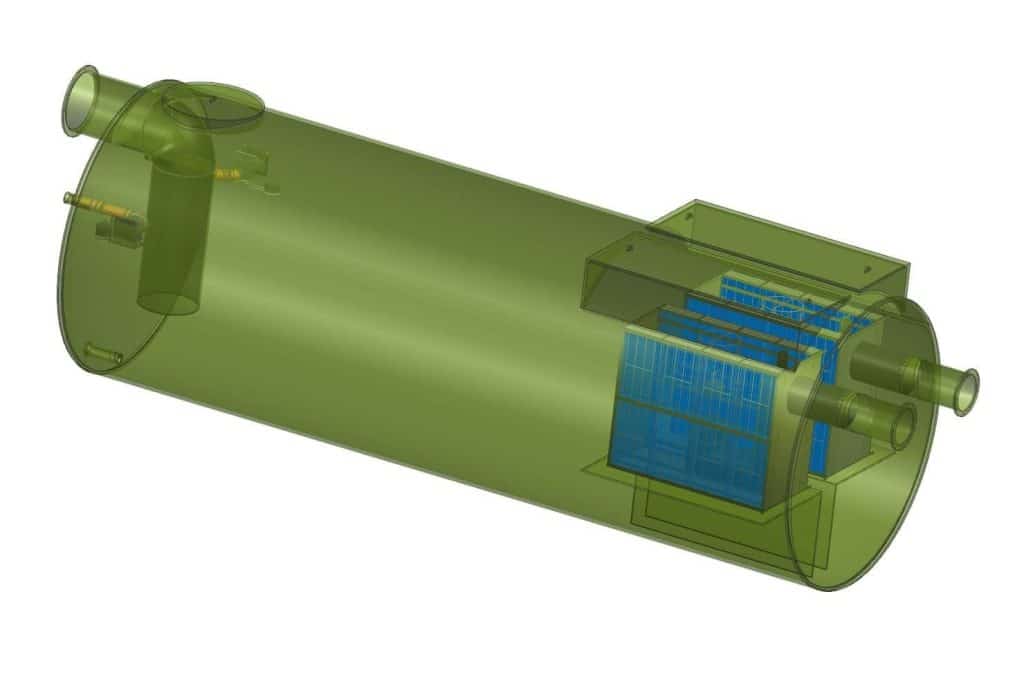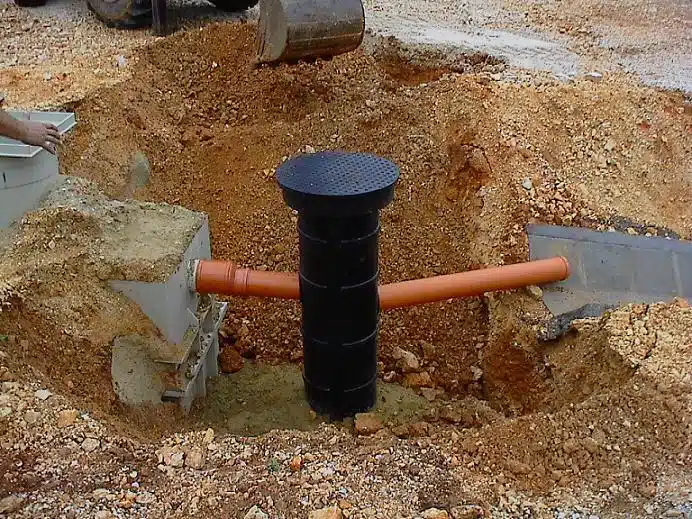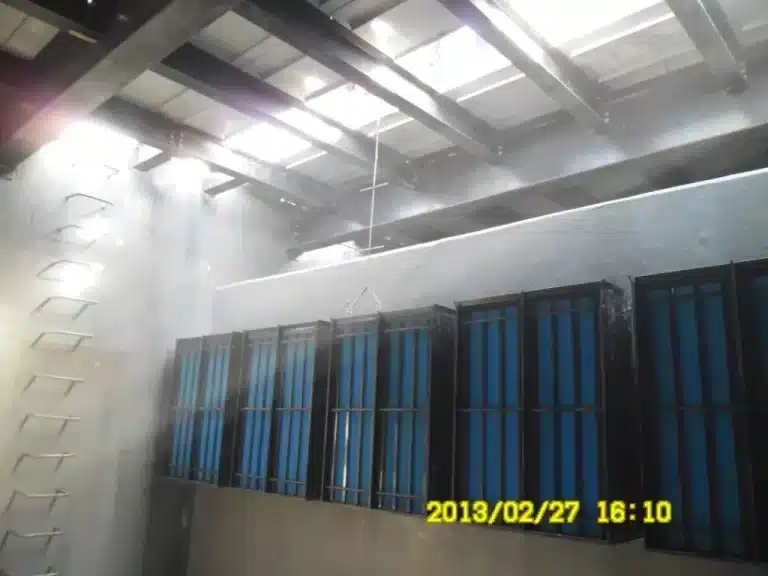Have you ever thought about what happens to the oil and grease from our streets and parking lots? In Ontario, below ground oil water separators (OWS) are key to protecting our water. These systems work hard to remove pollutants before they reach our waterways.
Ontario Below Ground OWS are crucial for our underground utilities. They help keep our water clean by separating oil and other pollutants from water. This ensures that industrial and commercial wastewater is safe for the environment.
We’re going to look at how these systems work and why they’re important. We’ll see how companies like Freytech Inc. are leading the way with new solutions. We’ll also discuss the role of utility locating services in setting up and keeping these systems running well.
Key Takeaways
- Below ground OWS are vital for protecting Ontario’s water resources
- These systems are key components of underground utilities and subsurface infrastructure
- OWS remove oil and hydrocarbons from wastewater before discharge
- Freytech Inc. offers advanced OWS solutions with superior separation efficiency
- Proper installation and maintenance require expert utility locating services
Understanding Below Ground Oil Water Separators in Ontario
Below Ground Oil Water Separators are key in managing wastewater in Ontario. They separate oil, diesel, gasoline, and other hydrocarbons from water. Let’s look at the main points about Below Ground OWS in Ontario.
Definition and Purpose of Below Ground OWS
These systems are underground and remove oil and other petroleum products from wastewater. They use gravity to separate lighter oil from heavier water. This stops harmful substances from getting into the environment.
Regulatory Framework in Ontario
In Ontario, Below Ground OWS follow strict rules. The Ontario Water Resources Act and Environmental Protection Act set the standards. Most OWS need Environmental Compliance Approvals (ECAs). Some might be allowed to self-register under the Environmental Activity and Sector Registry (EASR).
Environmental Benefits of Below Ground OWS
Below Ground OWS have big environmental benefits. They keep water clean by stopping oil pollution. These systems help businesses follow environmental laws and lessen their impact on nature. Sometimes, ground-penetrating radar checks how well Below Ground OWS work, making sure they protect the environment well.
Key Components and Design Features of Ontario Below Ground OWS
Ontario Below Ground Oil Water Separators (OWS) are key in removing oil from wastewater. They help keep our environment safe and protect our water resources.
At the heart of an OWS are several chambers. These chambers make it easy to separate oil from water. As water moves through, the oil floats up because it’s lighter. This way, the OWS can remove oil effectively, leaving the water clean.
Modern OWS systems use coalescing media for better oil removal. This technology captures both free and mixed oil particles, making the process more efficient. If you’re thinking about installing an OWS, make sure to call Ontario One Call for safe digging advice.
OWS designs also focus on safety. They have automatic shut-off to stop oil spills if there’s too much flow. This keeps our environment safe, even when things go wrong. Before digging, use private locate services to find any hidden pipes or wires.
Freytech Inc. provides OWS packages with the latest coalescing technology. These systems meet Ontario’s tough environmental rules and fit your site’s needs. With the right design and safety in digging, these OWS work well and follow the law.
Installation Process and Considerations for Below Ground OWS
Installing a Below Ground OWS needs careful planning and execution. It involves several key steps for the best performance and life of the system.
Site Preparation and Excavation
Before digging, it’s key to map out utilities underground. This helps prevent accidents by avoiding pipes and cables. Once the area is clear, dig to the right depth and size for the OWS.
Proper Placement and Alignment
Putting the Below Ground OWS in the right spot is crucial. Make sure it sits on a level, stable base. Also, make sure the inlet and outlet pipes are aligned right to keep the flow smooth and avoid leaks.
Backfilling and Compaction Techniques
After setting the OWS, fill the hole with the right materials. Use gravel or sand in layers, and compact each one well. This makes sure the OWS stays stable and works well. Always follow the maker’s instructions and local rules during installation for the best results.
Maintenance and Operation of Below Ground Oil Water Separators
Keeping Below Ground Oil Water Separators in top shape is crucial. These underground utilities need regular care to function well. Let’s explore what it takes to maintain and run these systems smoothly.
Regular checks are essential for Below Ground Oil Water Separators. Look for signs of wear and tear often. Remove built-up oil and sludge as needed. This keeps the separator working at its best. Clean the parts that help separate oil from water, too. This step is vital for the system to do its job right.
Running these systems takes know-how. Keep an eye on what comes out of the separator. The water should be clean, meeting the 5 PPM rule. This means very little oil left in the water. Follow the maker’s guide for how often to do upkeep. Stick to the rules set by your area, too. This way, you protect the environment and keep your system running smooth.
Set a schedule for care based on your separator’s needs. Some might need monthly checks, others less often. Write down what you do each time. This helps track the system’s health over time. With good care, Below Ground Oil Water Separators can last many years, keeping our water clean and safe.
Ontario Below Ground OWS Suppliers and Manufacturers
Ontario has a wide range of Below Ground OWS providers. They offer solutions for various industries. You can find distributors in places like Woodbridge, St-Laurent, and Delta, ready to help with your needs.
Leading OWS Providers in Ontario
Some companies are leaders in the Ontario Below Ground OWS market. They have a variety of options, from simple to complex systems. When picking a supplier, think about product quality, customer support, and installation services.
Freytech Inc.: Innovative OWS Solutions
Freytech Inc. is a key player in Ontario’s Below Ground OWS industry. They focus on advanced OWS technology. Their systems have better coalescing methods and high separation efficiency. Freytech’s products meet strict environmental standards and last a long time.
Comparing OWS Options in the Ontario Market
When looking at Below Ground OWS options in Ontario, focus on key points. These include separation efficiency, meeting regulations, and maintenance needs. Think about the long-term costs, including the initial price and ongoing expenses. For expert advice on choosing the right Below Ground OWS, call Freytech Inc. at +1 (305) 372-1104.
Compliance with Ontario Environmental Legislation for Sewage Works
Ontario’s laws are crucial for managing sewage works, like underground oil water separators. Facilities need an Environmental Compliance Approval unless they’re exempt or self-registered. The Ministry of the Environment, Conservation and Parks enforces these rules to protect our natural resources.
Owners of sewage systems have important duties. They must operate, maintain, and monitor their equipment properly. This ensures they follow the law and protect the environment. Before starting any project, it’s key to check for subsurface infrastructure. Utility locating services can help find underground utilities and prevent mistakes.
Ontario One Call is a great tool for those doing excavation work. They give info on buried infrastructure to keep workers safe and avoid service issues. By following these rules and using resources like Ontario One Call, facility owners can fulfill their legal duties and protect the environment.
These separators are crucial in storm water systems. They process runoff to meet the US EPA’s Clean Water Act standards. With effective oily water treatment, facilities protect the environment and dodge big fines.
Conclusion
Ontario Below Ground OWS systems are key for managing wastewater and protecting the environment. They help businesses meet strict rules and separate oil and water well. By using these systems, companies protect the environment and their work.
Freytech Inc. is a top choice for these systems. They offer innovative solutions that help businesses follow the law and work efficiently. It’s important to install, maintain, and use these systems right for long-term success in Ontario’s industries.
As we worry more about the environment, Below Ground Oil Water Separators will be more important in Ontario. By using these advanced technologies, businesses can help keep the environment clean. They can also make sure their operations are legal and run well.










